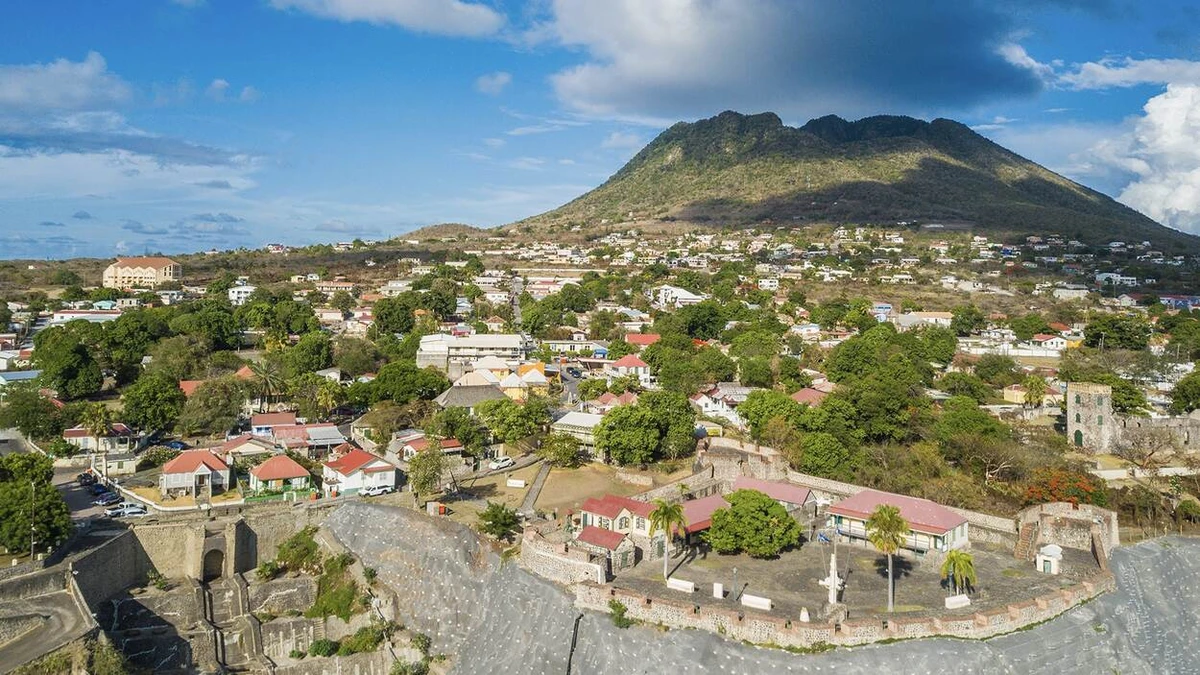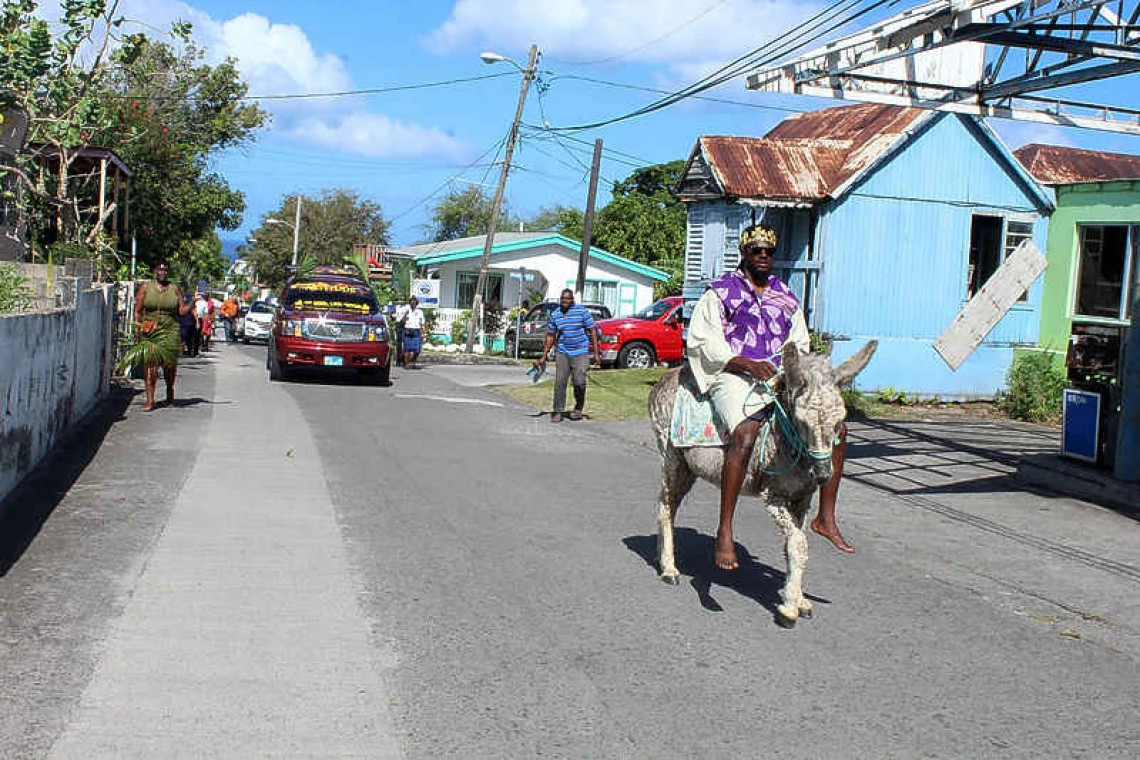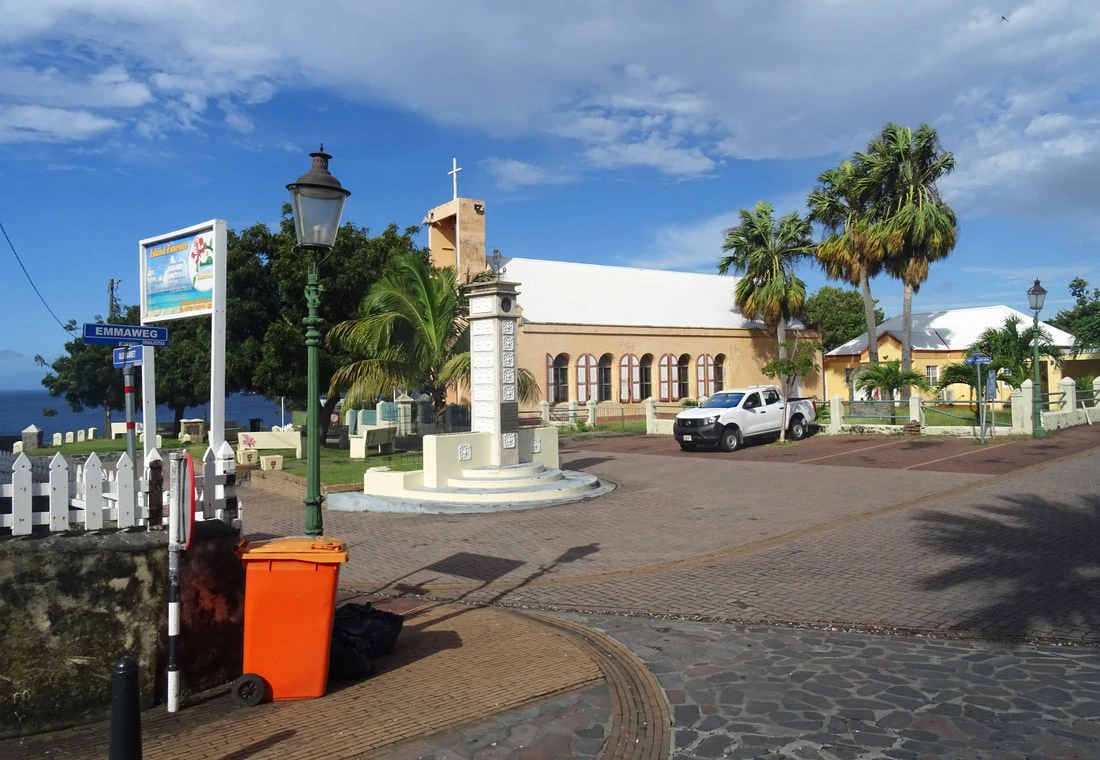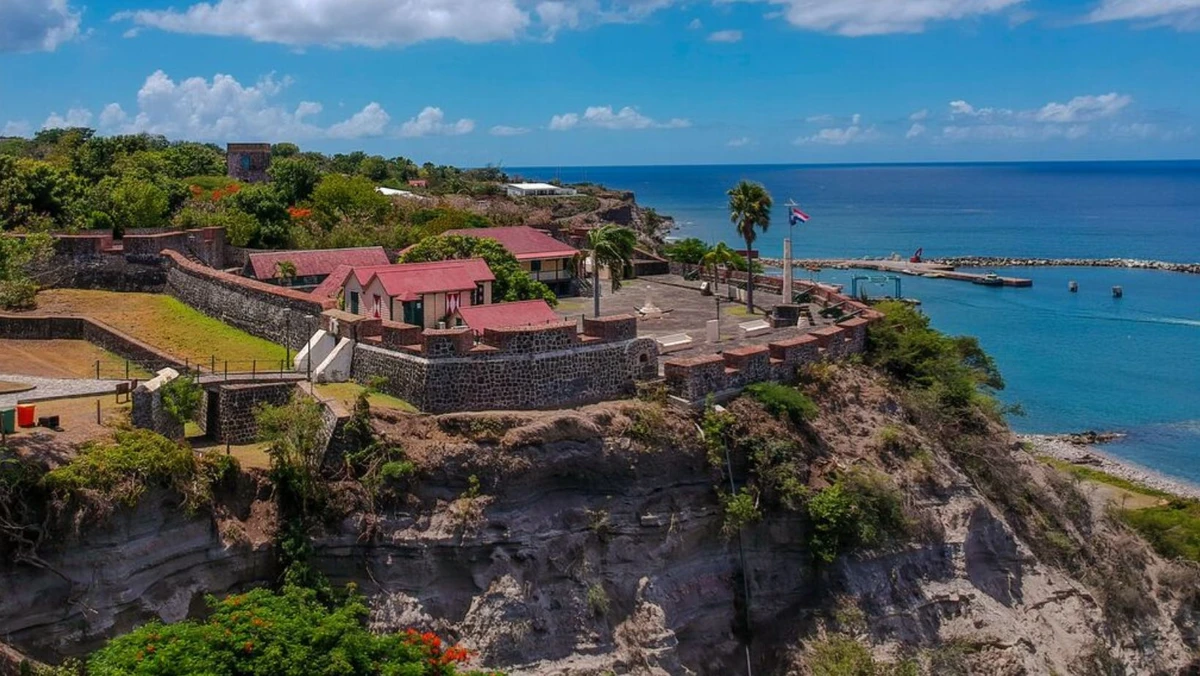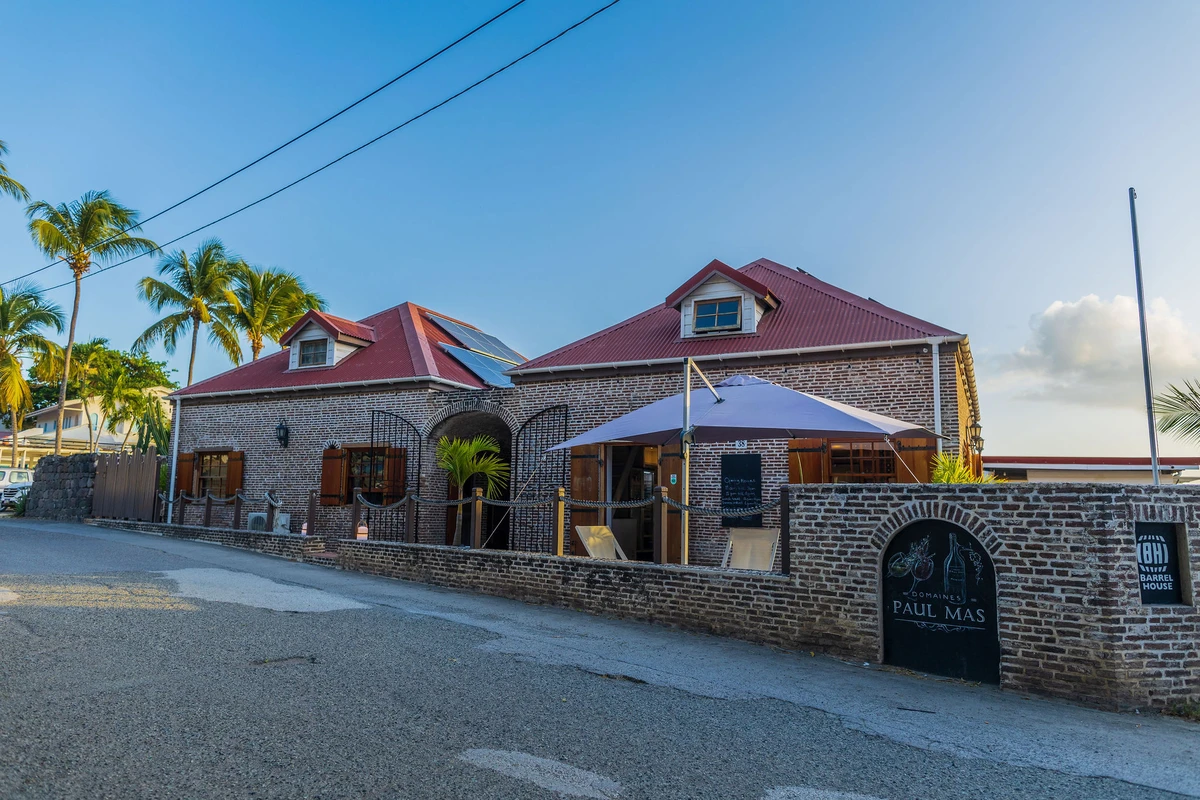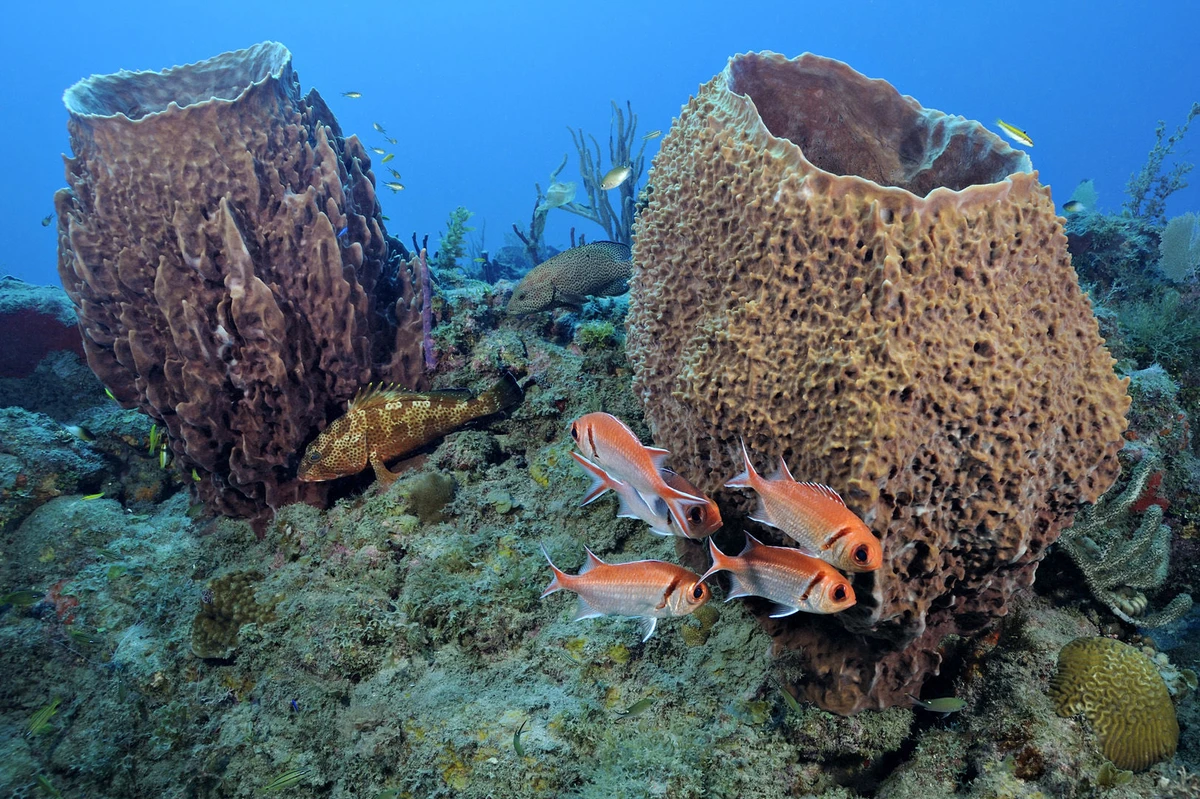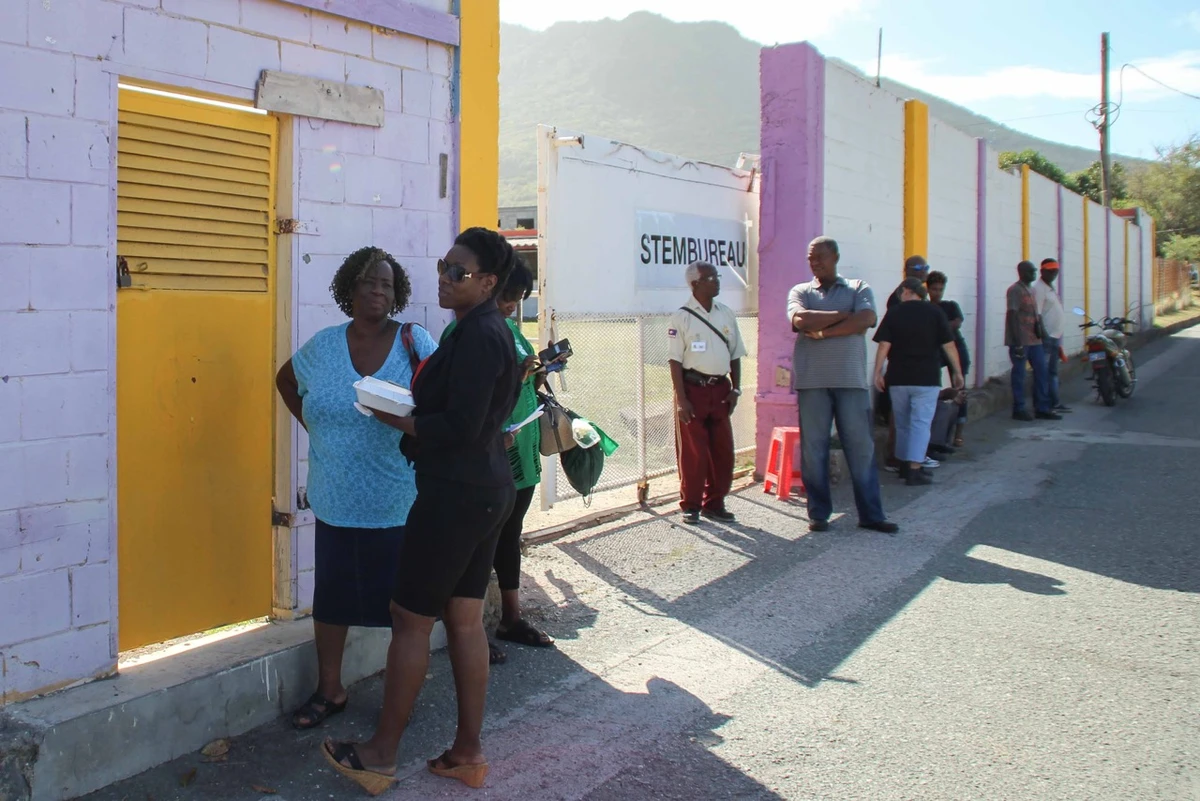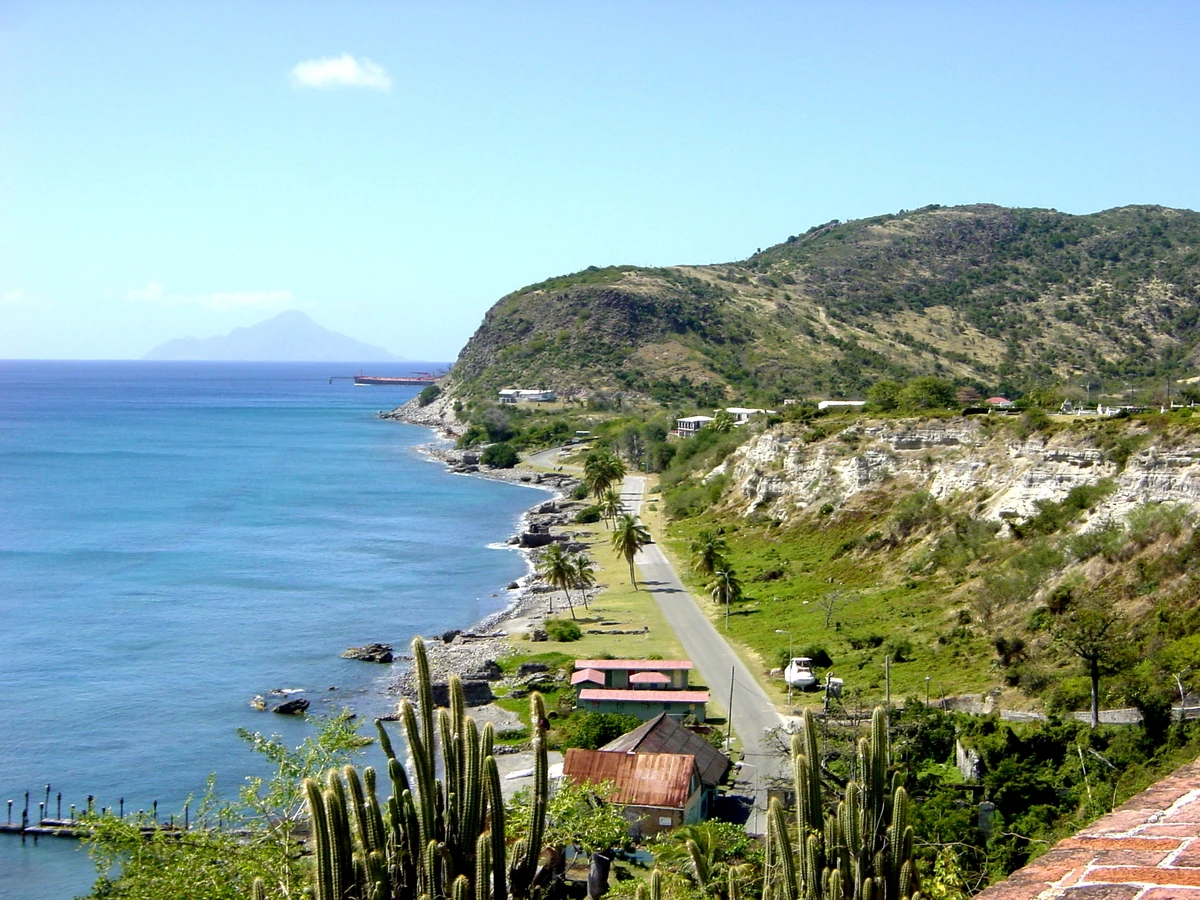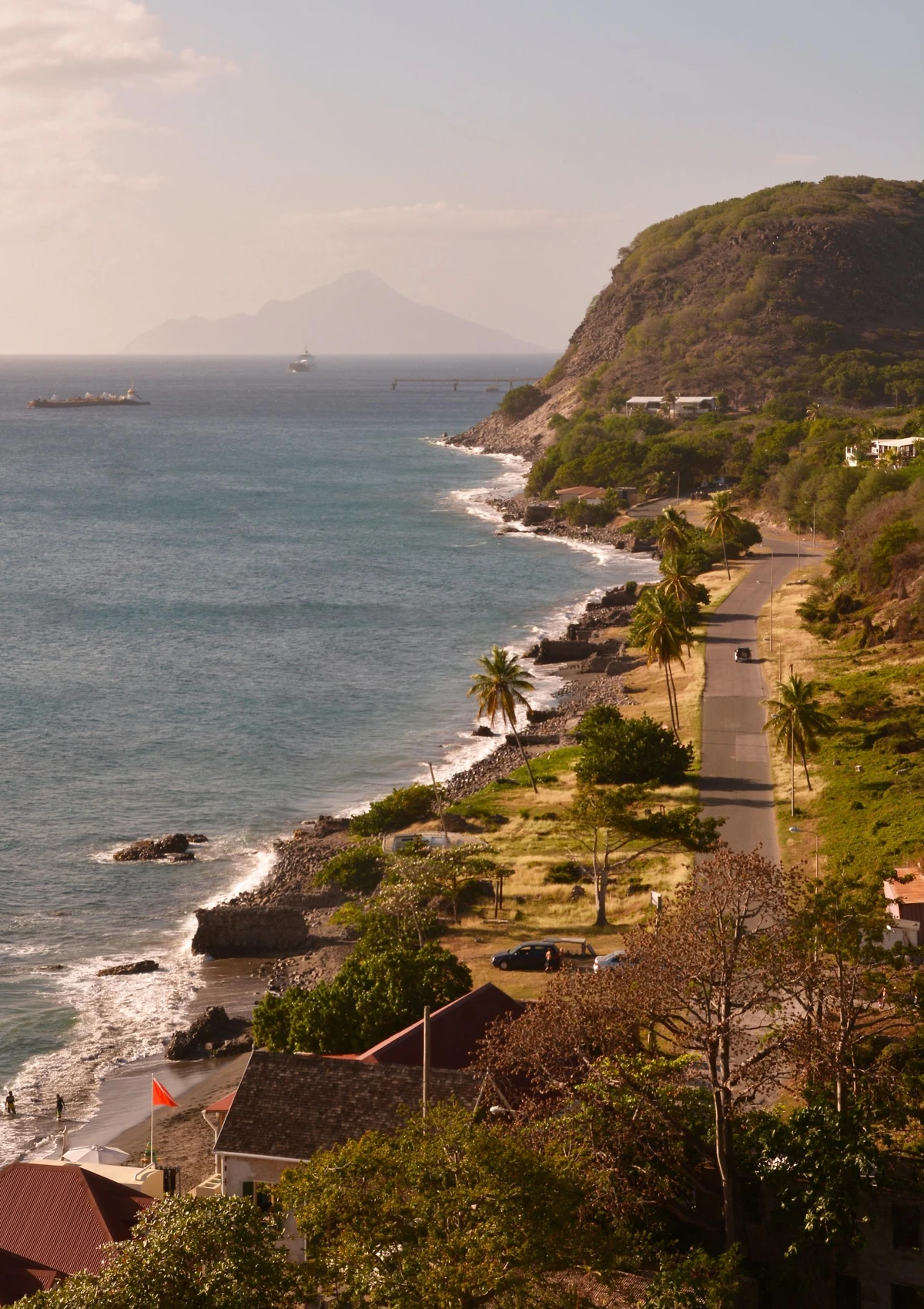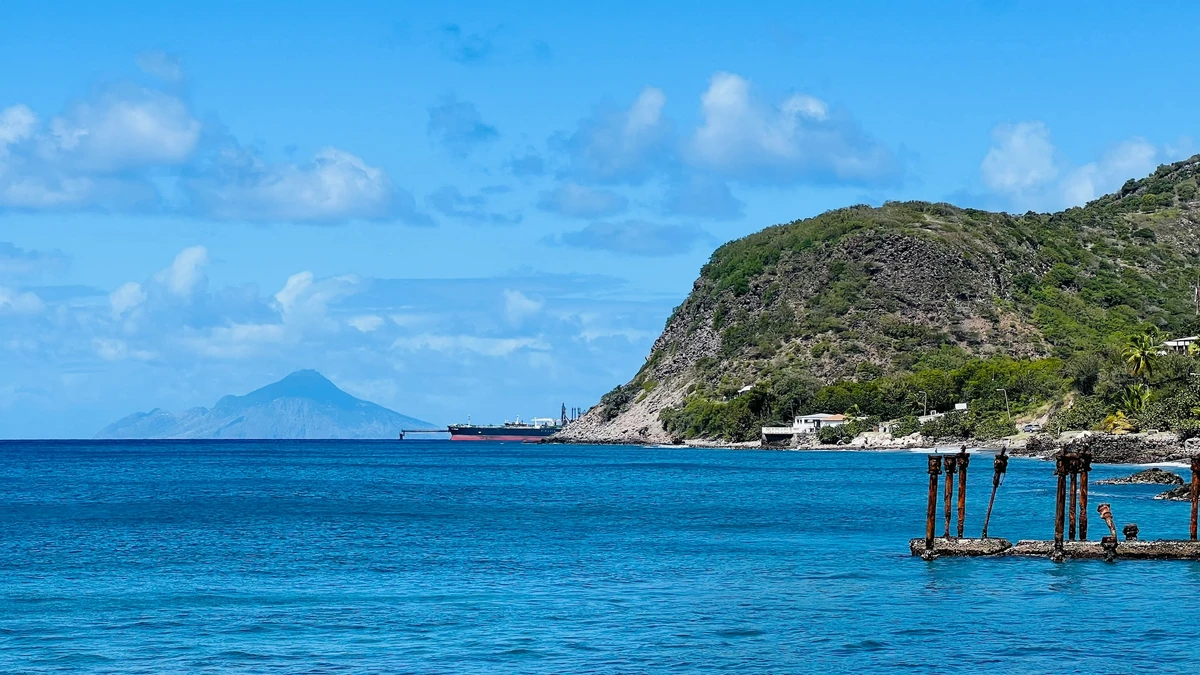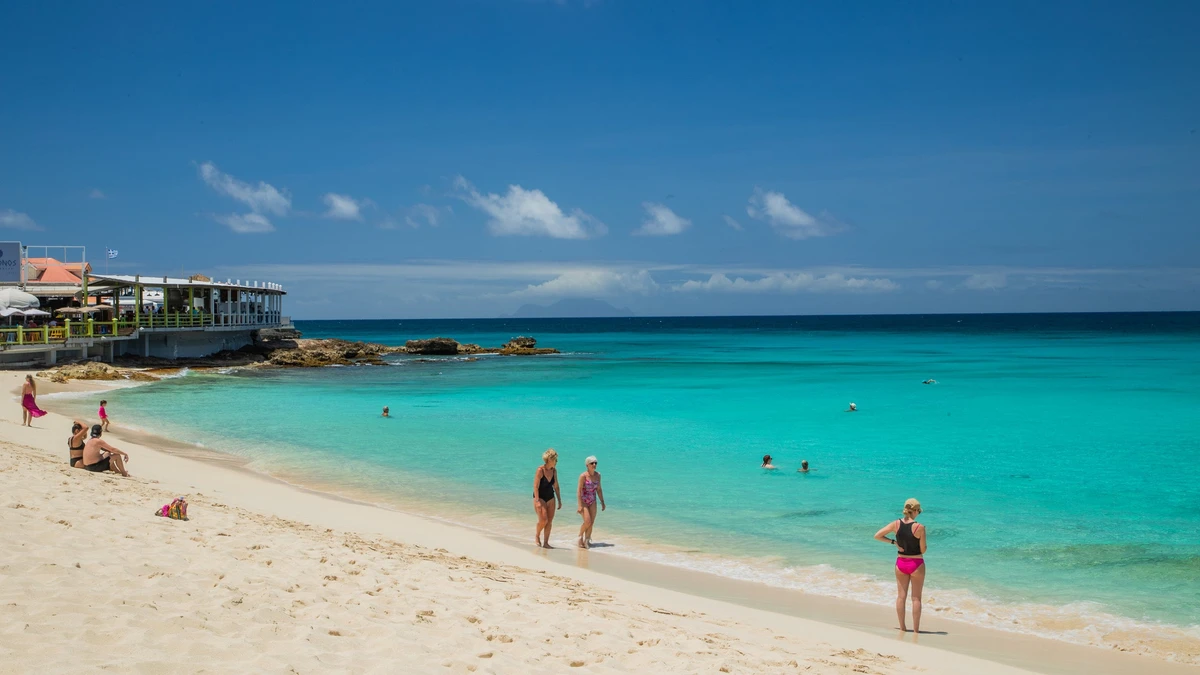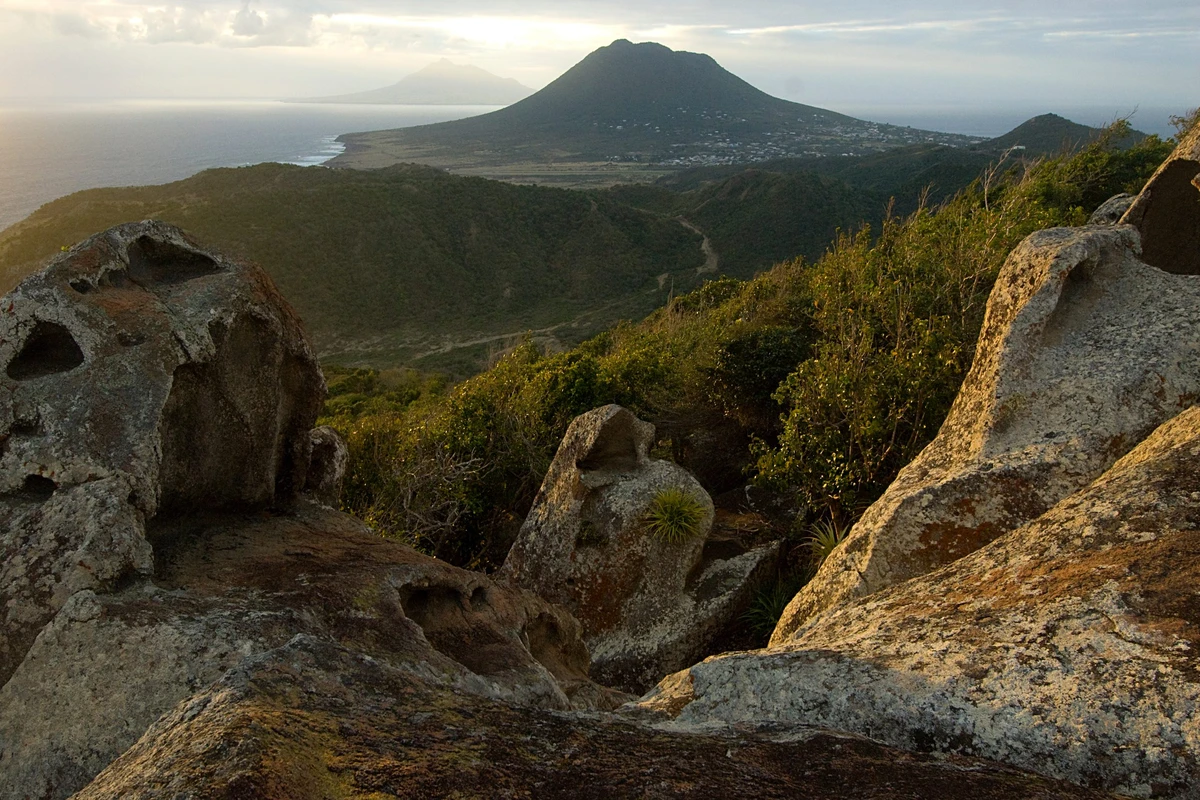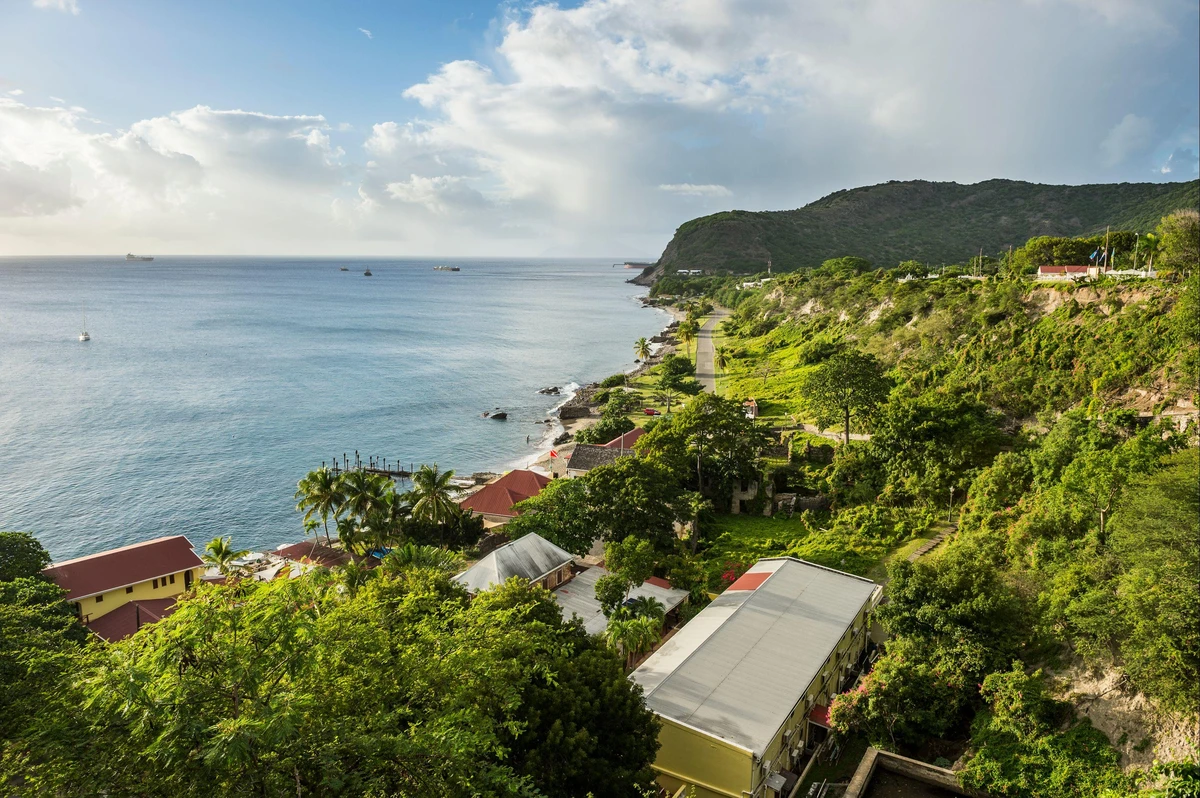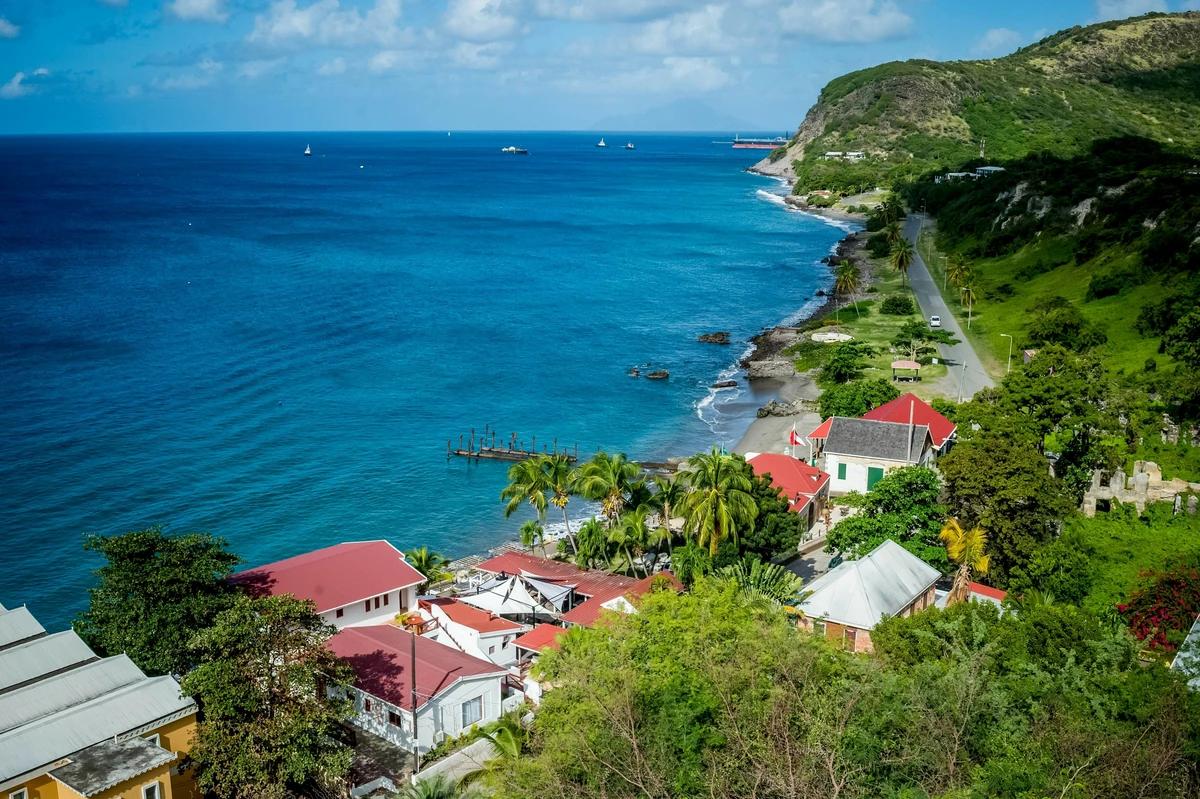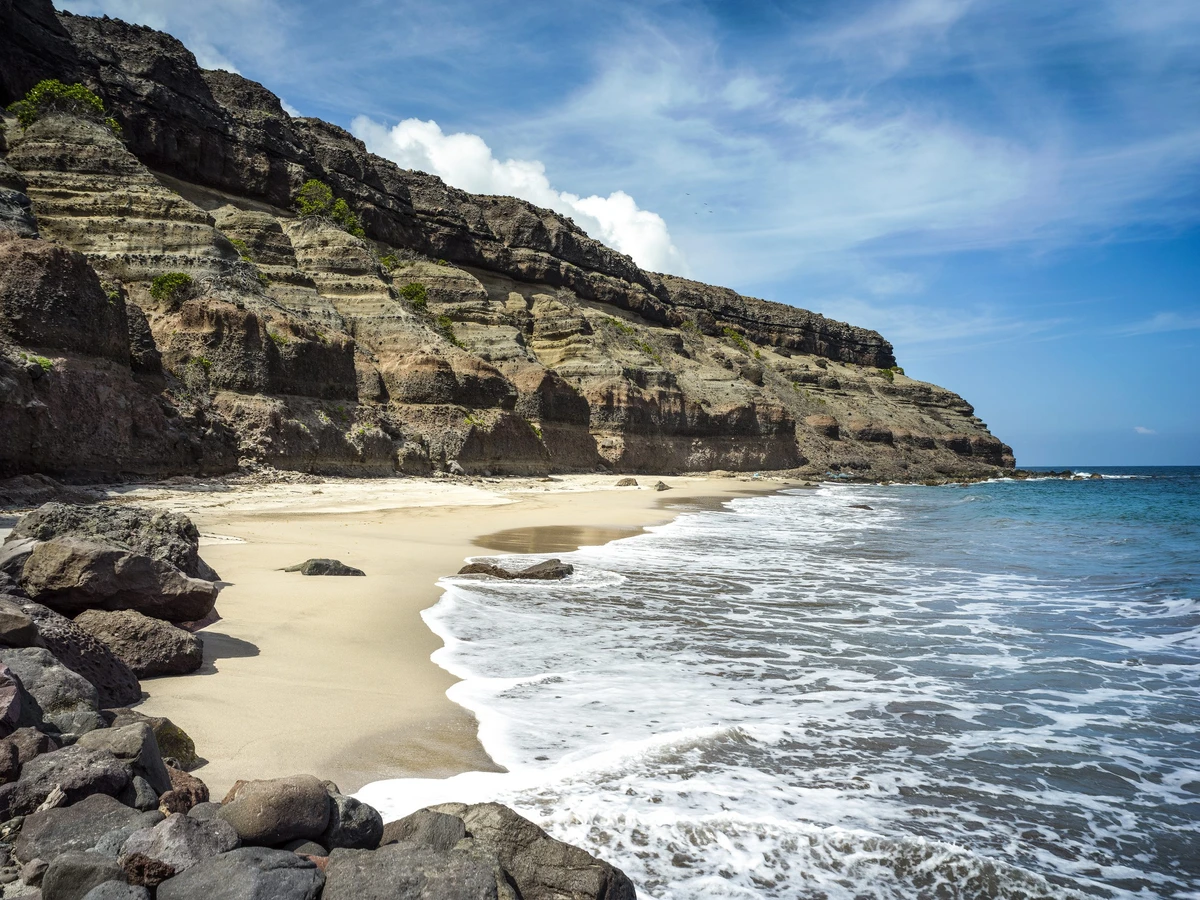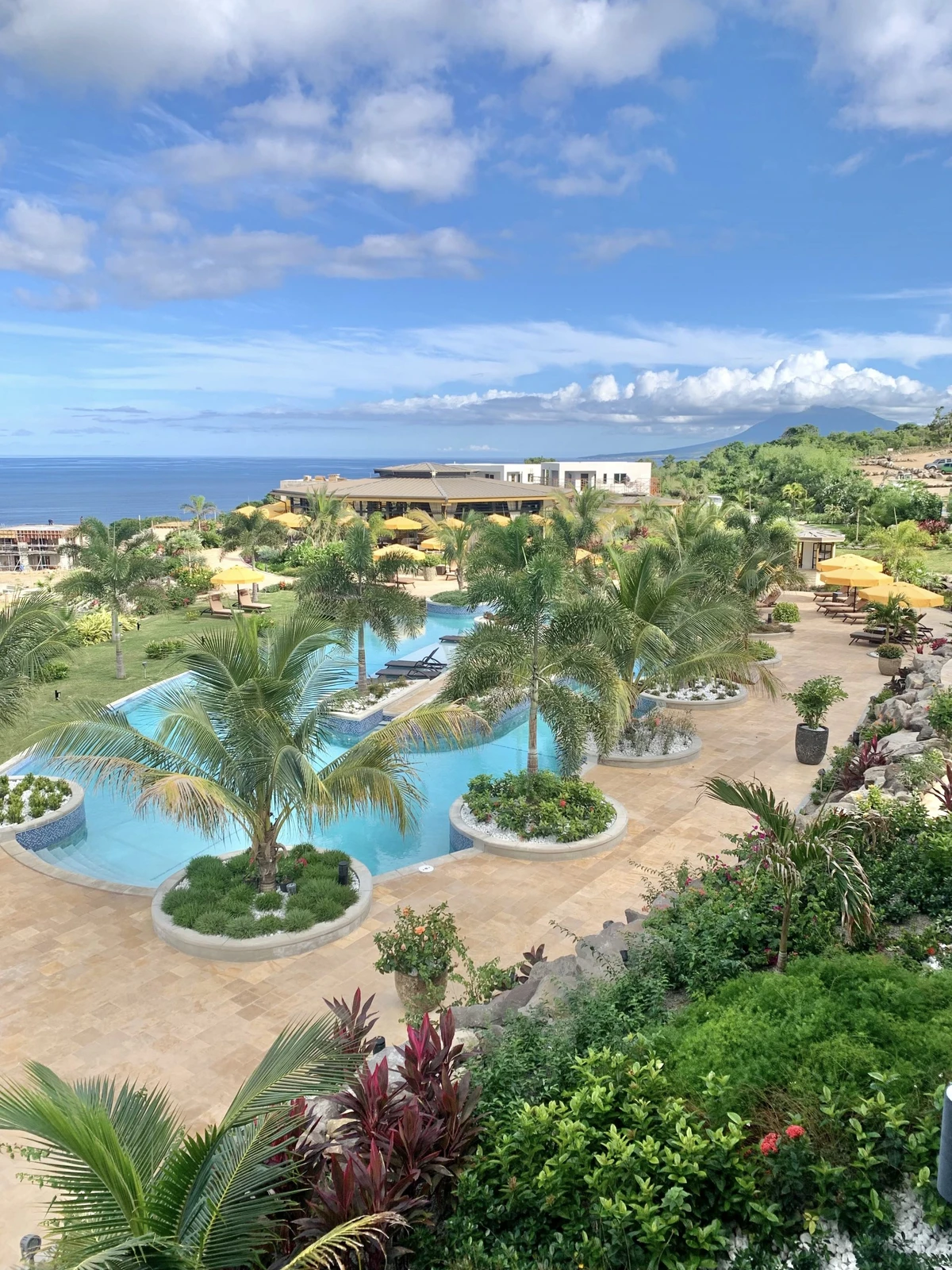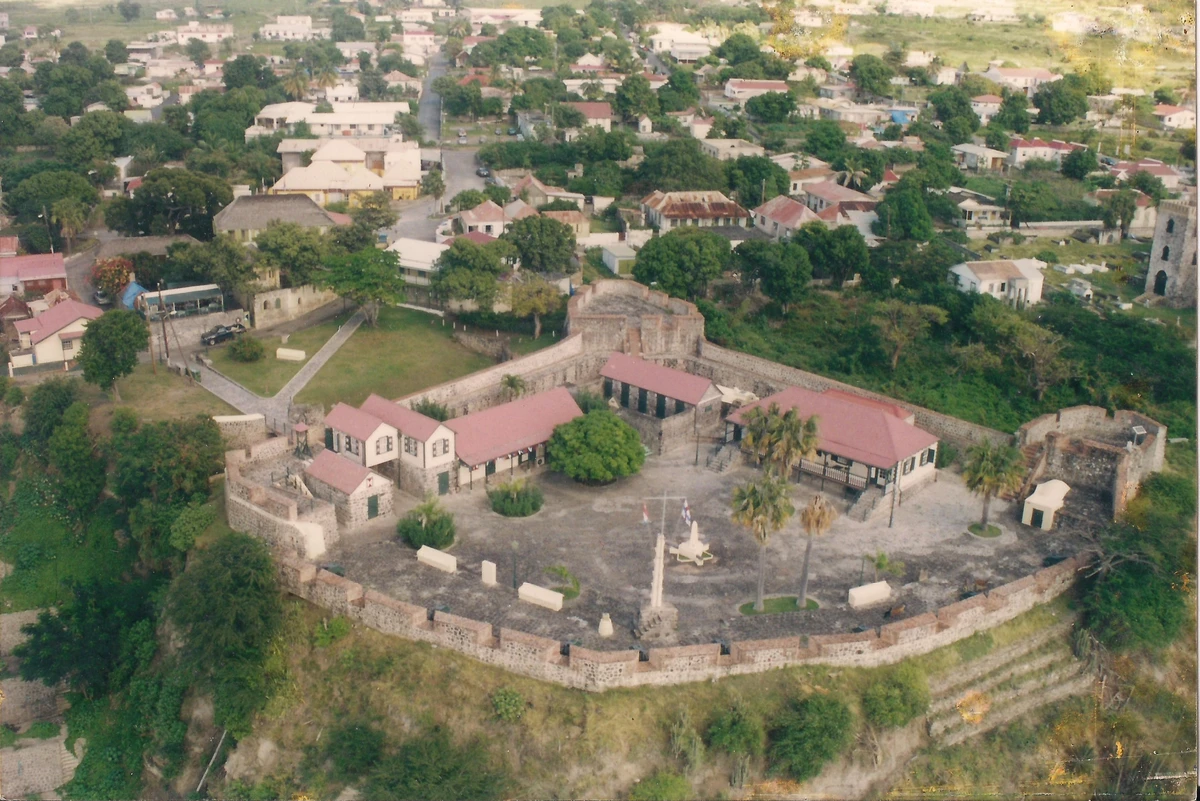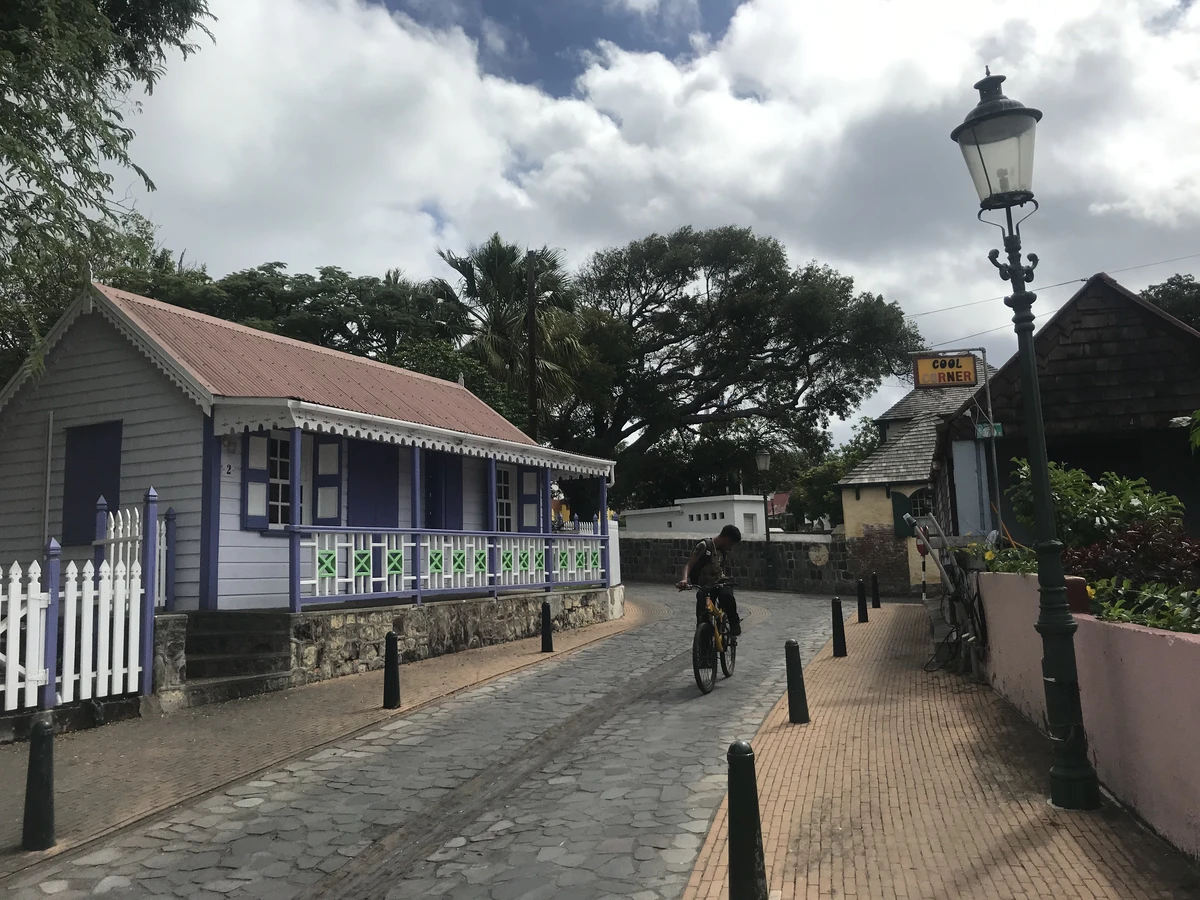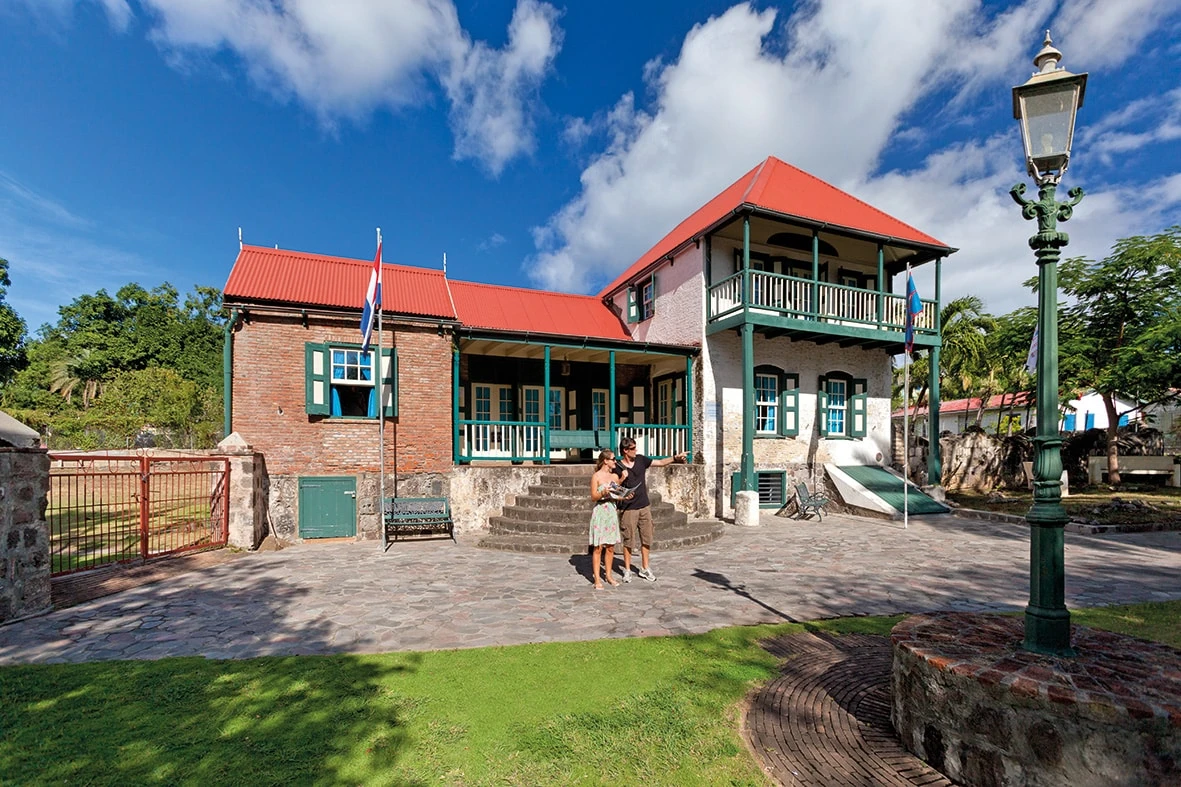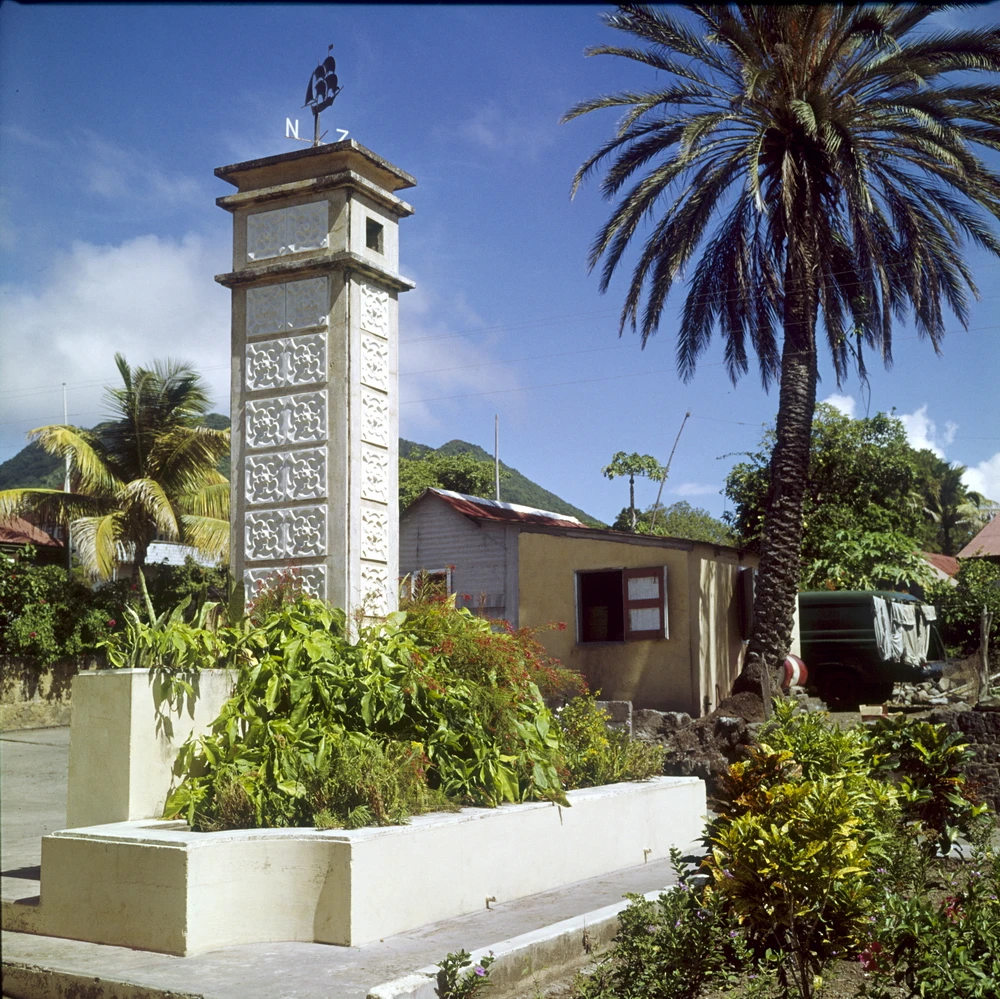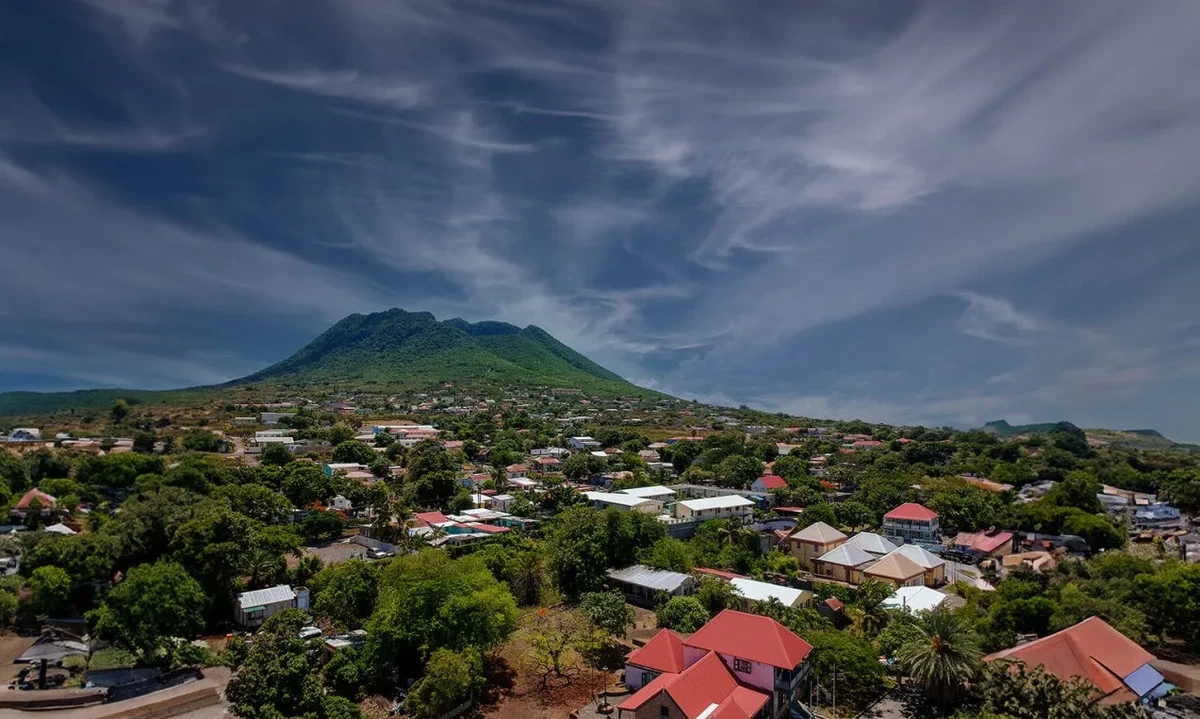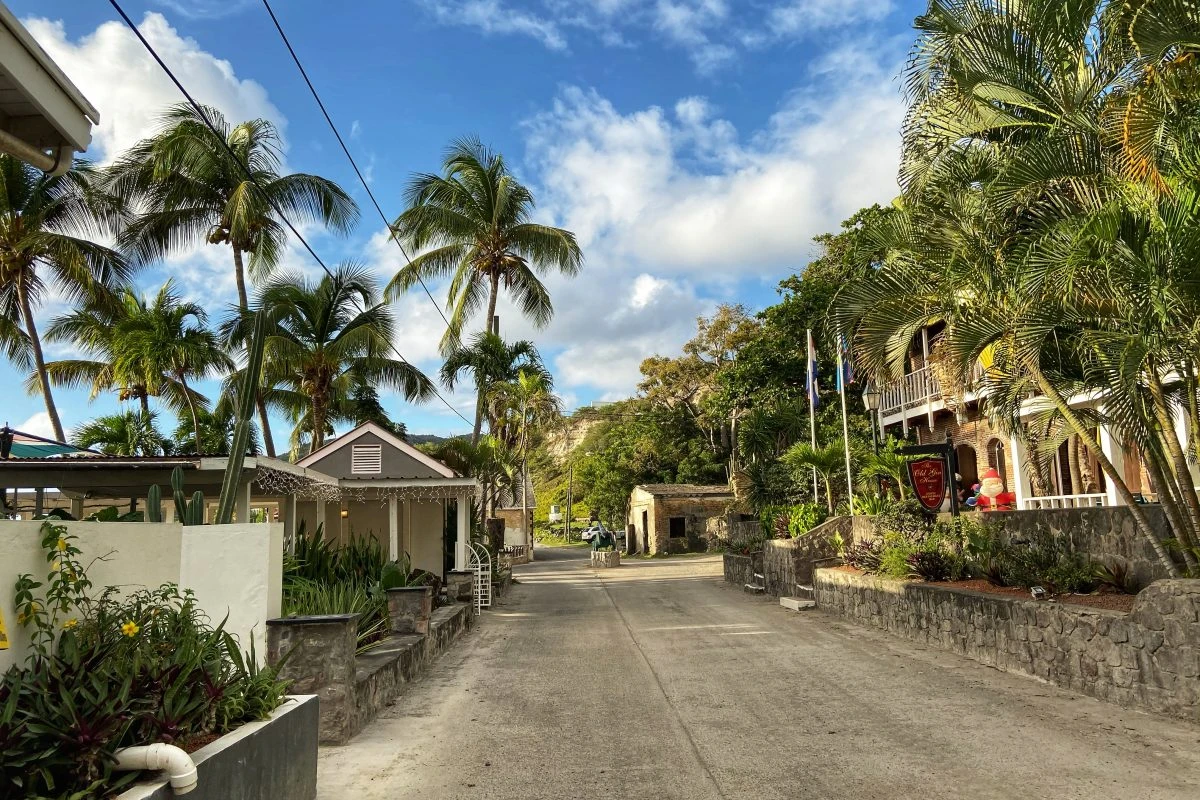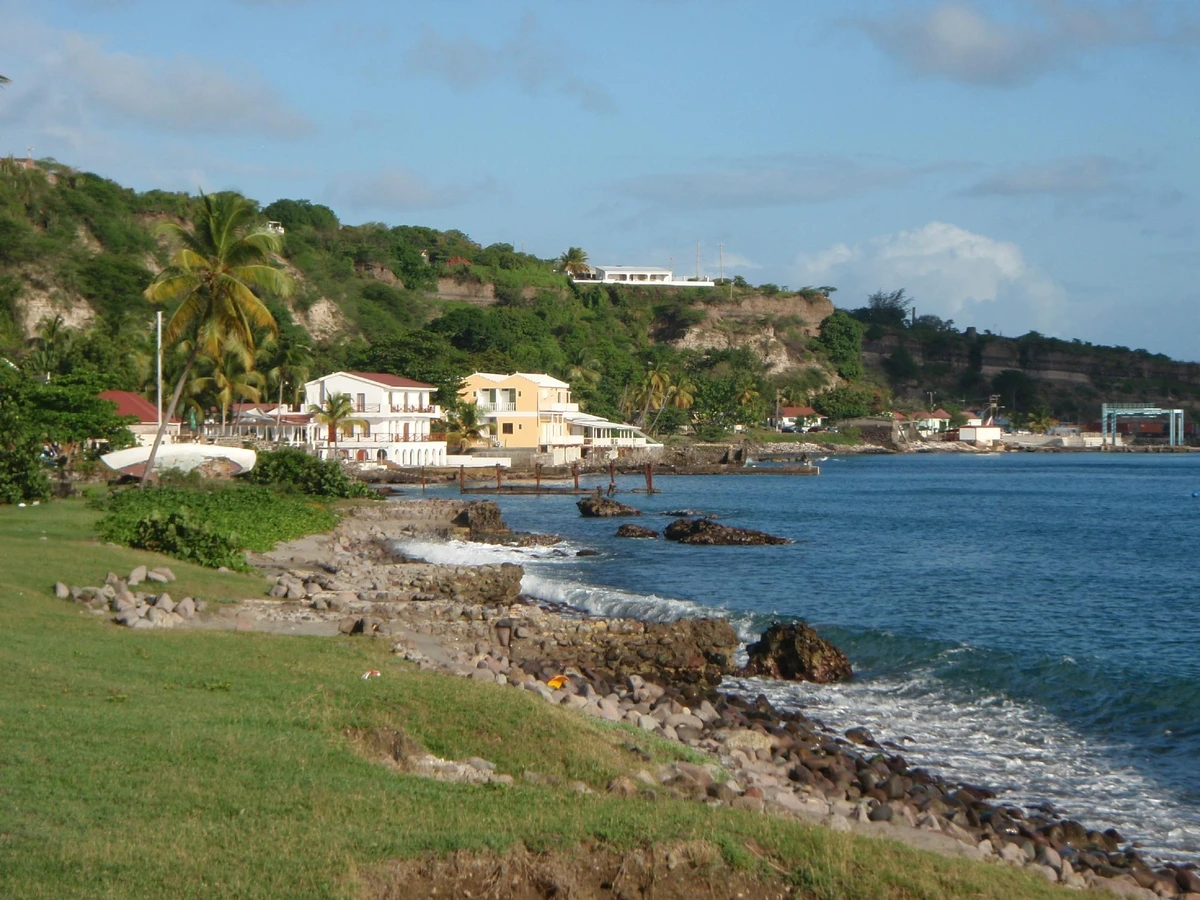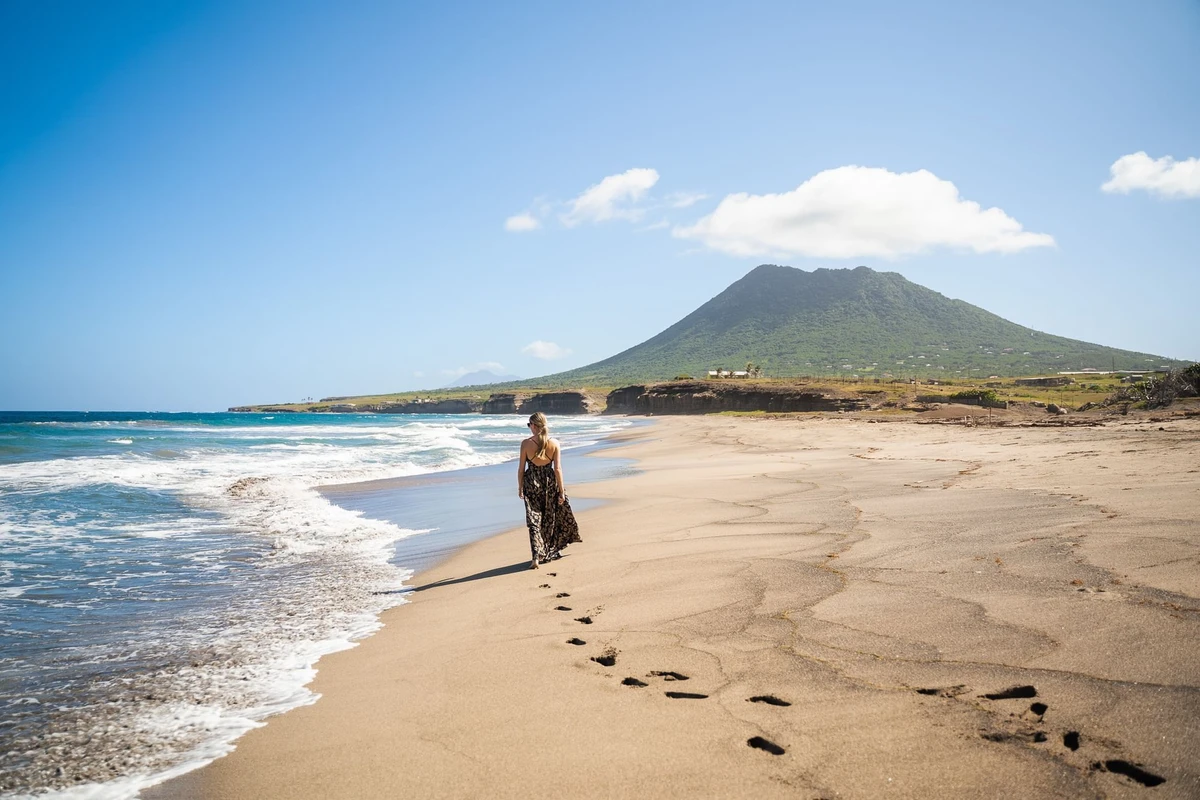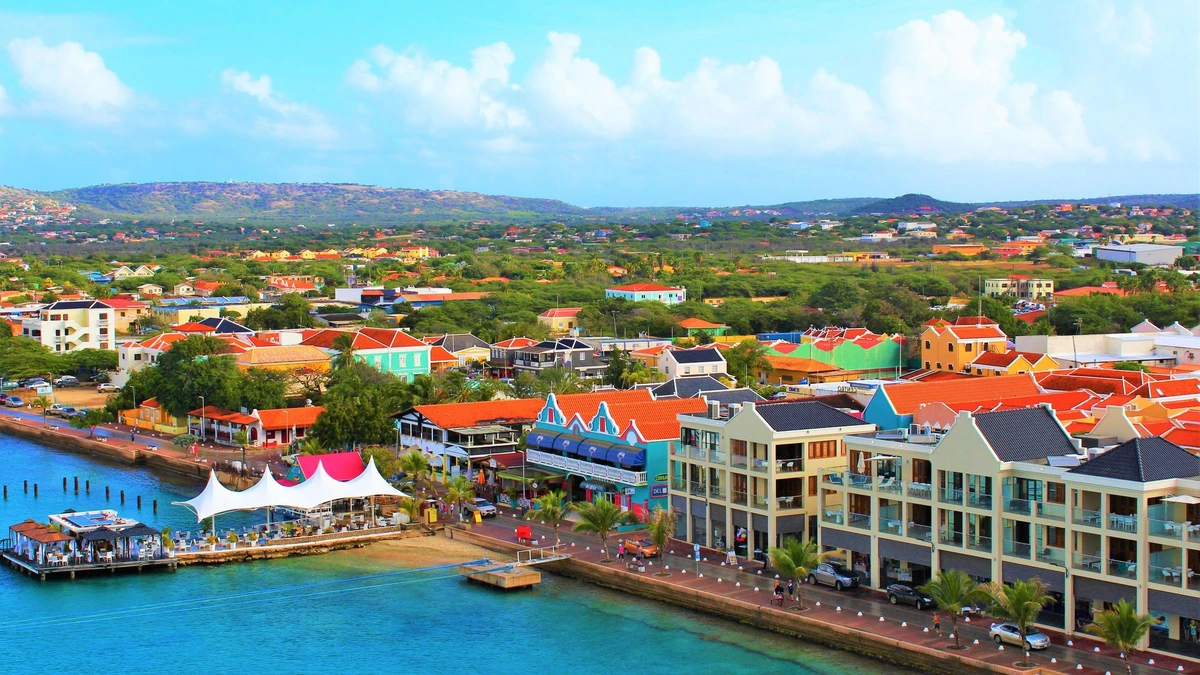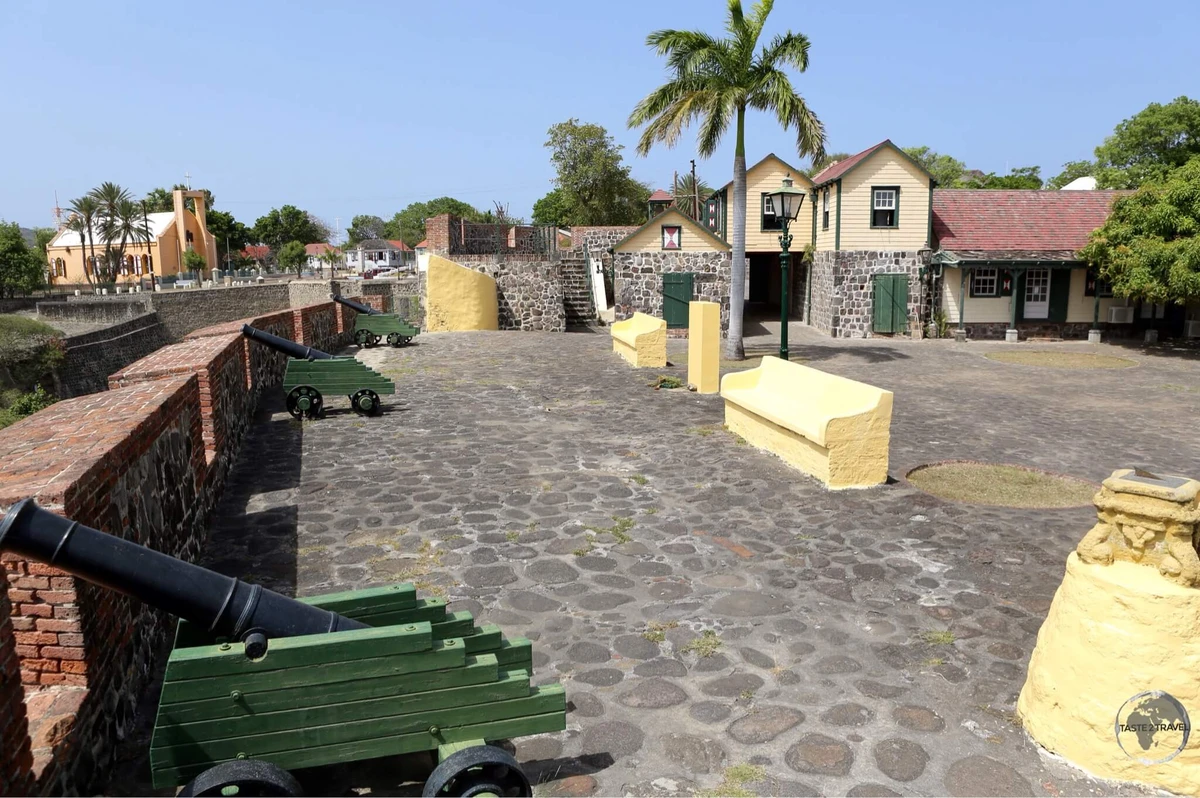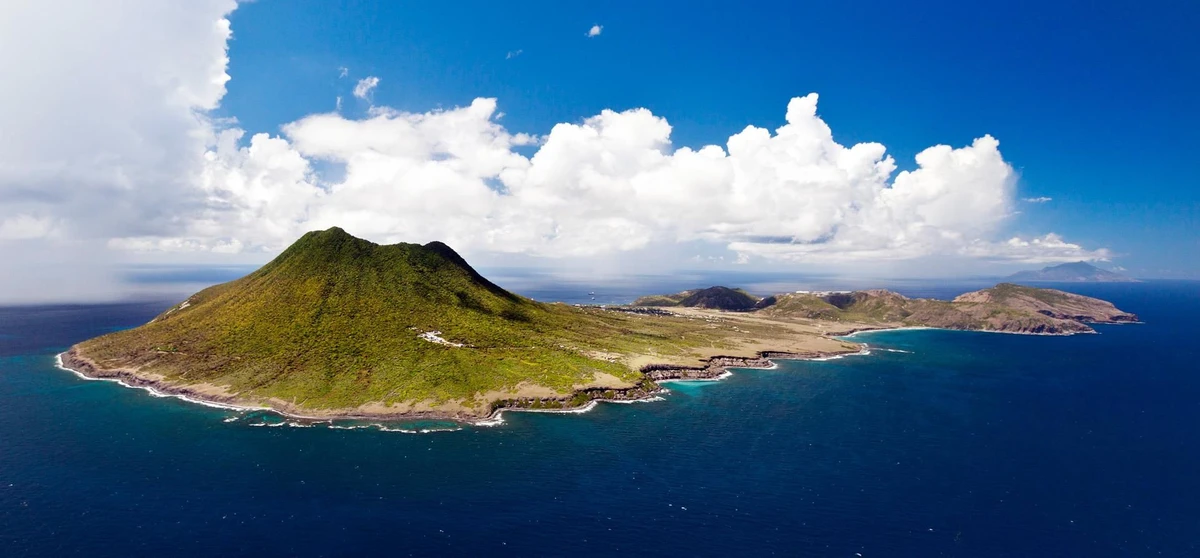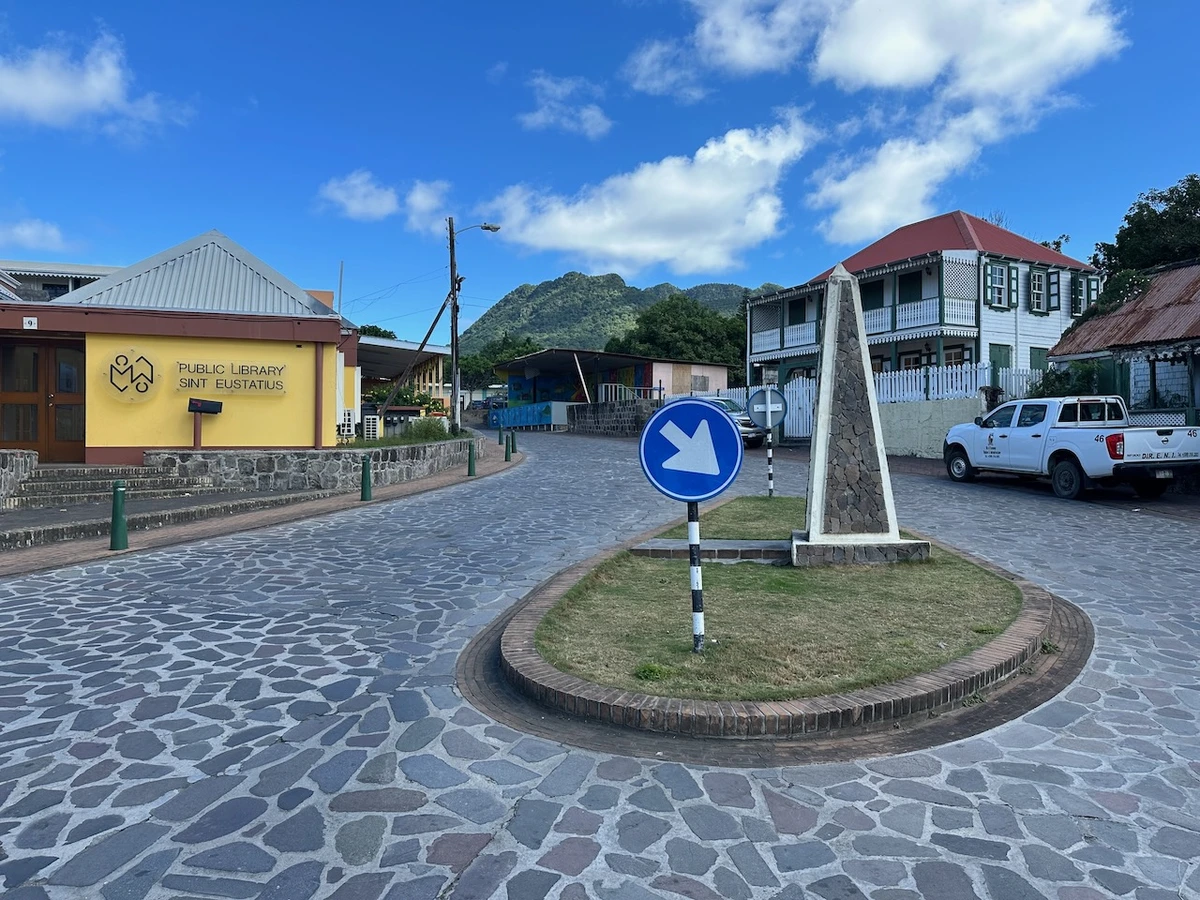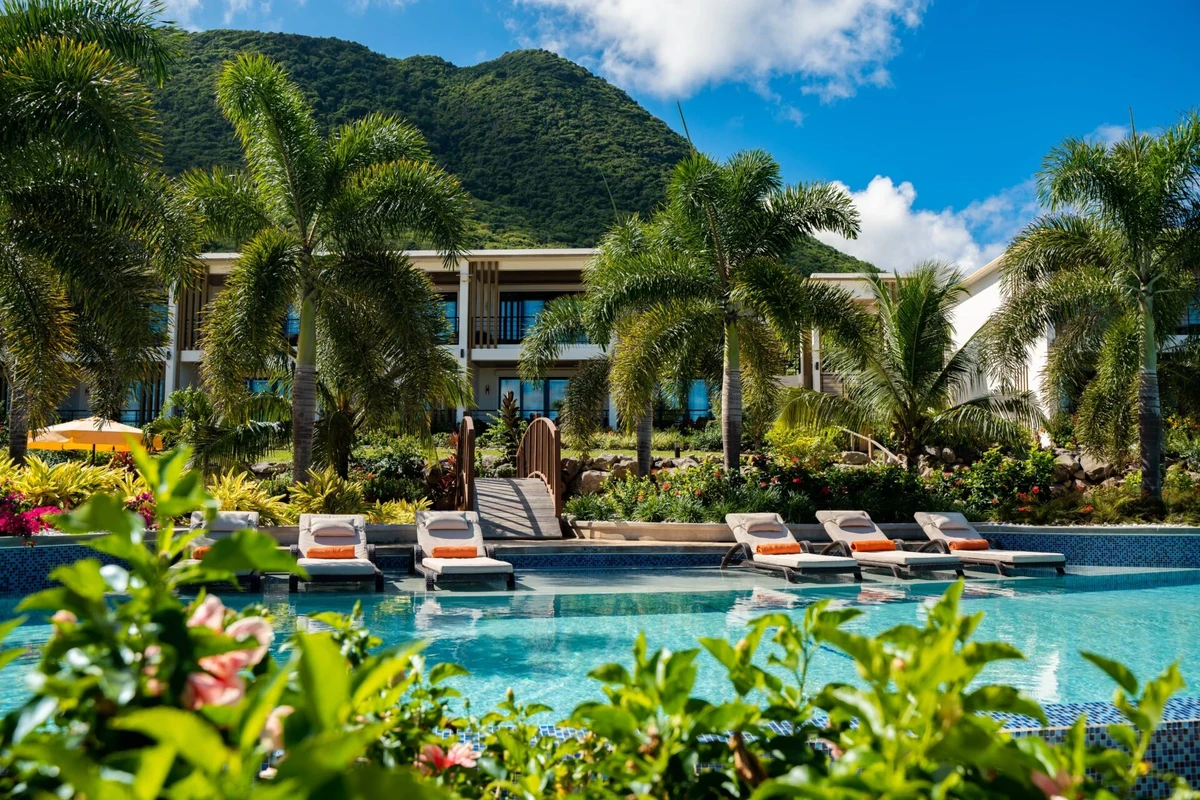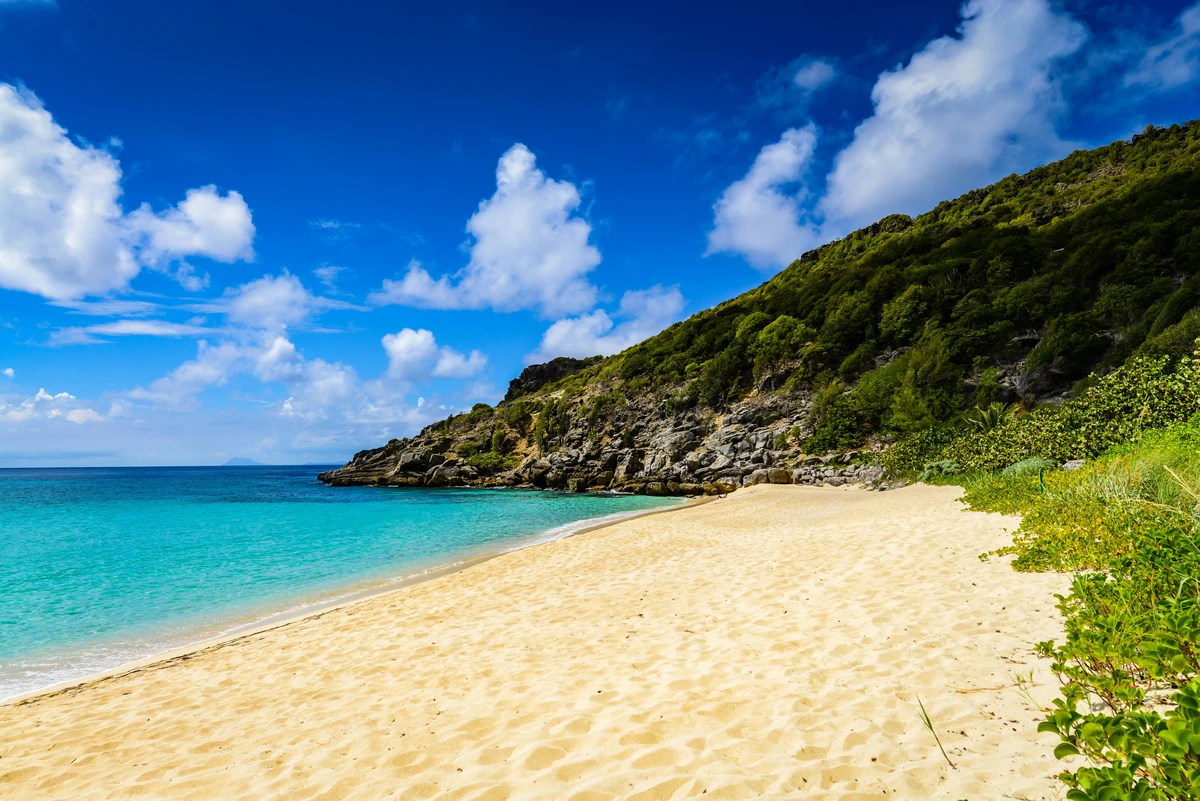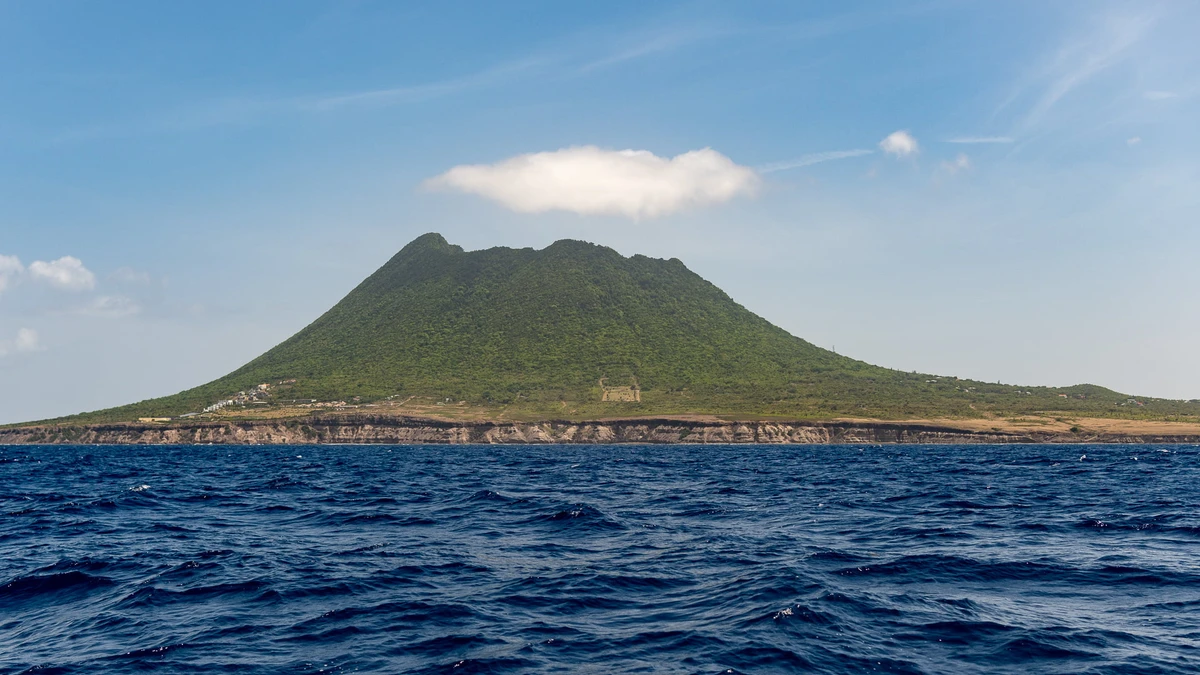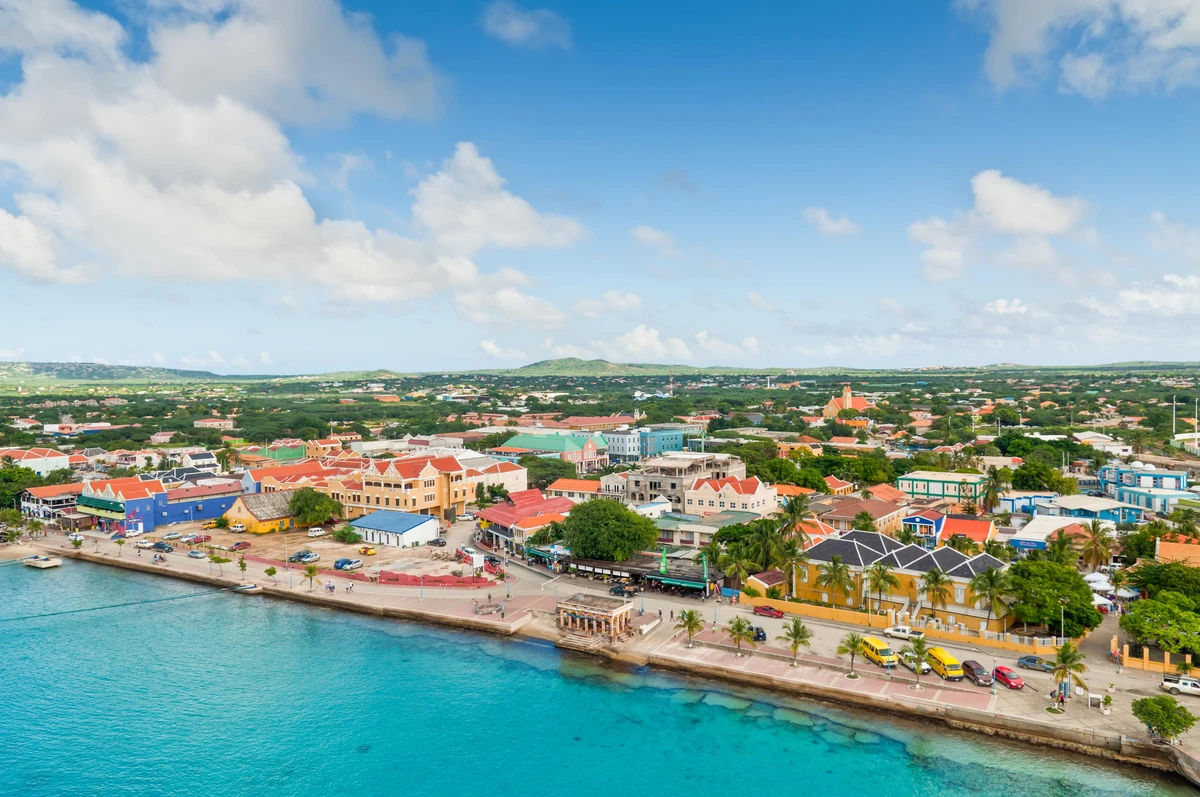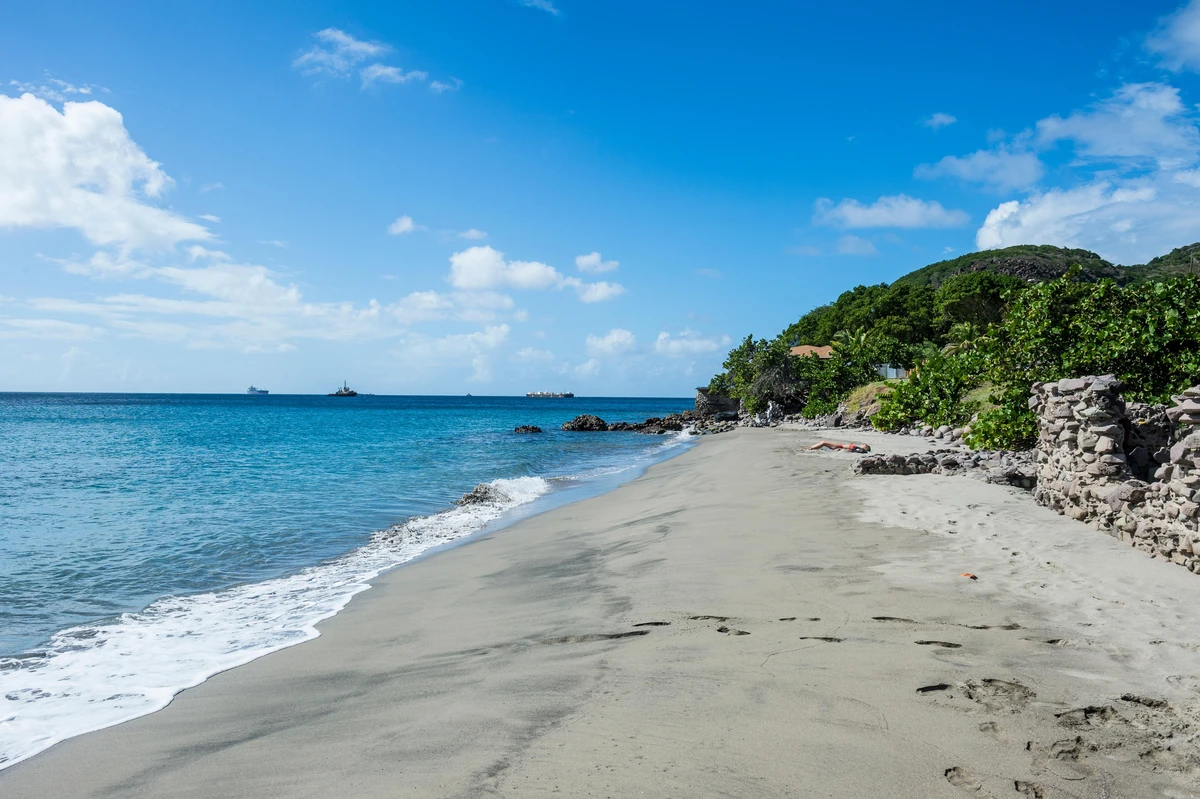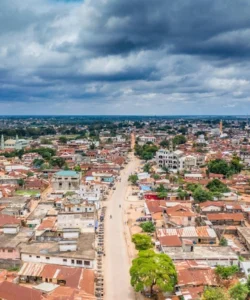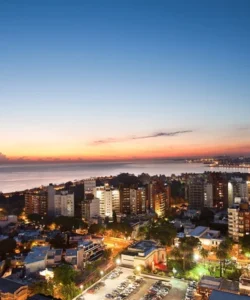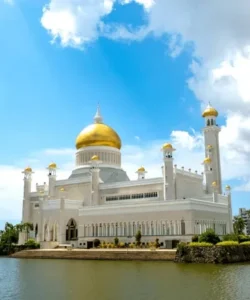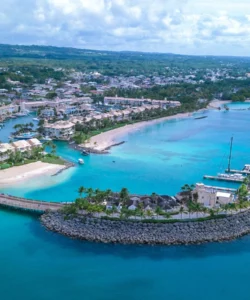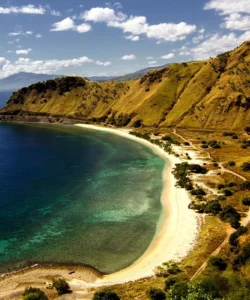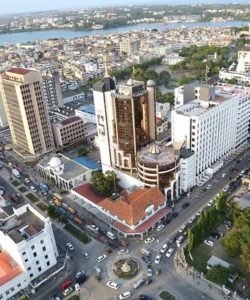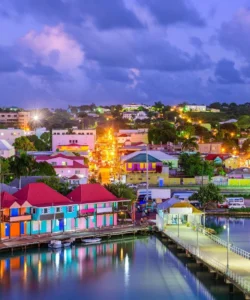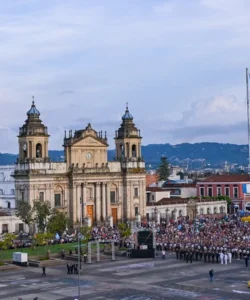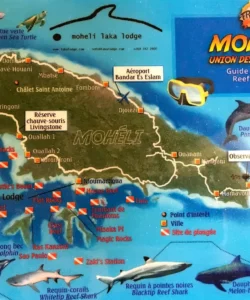Sint Eustatius, often affectionately called “Statia” (pronounced “Stay-sha”), is a special municipality of the Netherlands in the Caribbean. It’s a small, quiet island with a rich history, particularly its role as a major trading hub in the 18th century, earning it the nickname “The Golden Rock.” Today, it’s known for its historical ruins, excellent diving on shipwrecks and coral reefs, and its commitment to nature conservation.
![]()
Here’s a detailed overview:
- Area: Approximately 21 km² (8.1 sq mi).
- Population: Estimated at around 3,365 people as of January 2025.
- Language: The official languages are Dutch and English. English is the primary language used in daily life.
- Currency: United States Dollar (USD).
- Religion: Predominantly Christian, with various Protestant denominations (Methodist, Seventh-day Adventist) and Roman Catholicism being the largest.
- Capital: Oranjestad.
- Major Cities/Towns: Oranjestad (divided into Upper Town and Lower Town).
Attractions & Wonders:
Statia’s attractions are a blend of its historical significance and natural beauty, especially its underwater world.
- The Quill National Park & Boven National Park: These two national parks protect the island’s unique ecosystems.
- The Quill: A dormant volcano dominating the island’s landscape. Hiking to its crater (which contains a lush rainforest) is a popular activity, offering rich biodiversity and panoramic views from the rim.
- Boven: Covers the northern hills of the island, home to various trails and wildlife.
- Historical Monuments and Archaeological Sites: Oranjestad is an open-air museum, with numerous ruins from its 18th-century heyday.
- Fort Oranje: A well-preserved 17th-century fort overlooking the sea, offering historical insights and great views. It’s here that the “First Salute” to the American flag was fired in 1776, marking the first international recognition of the United States.
- Synagogue Honen Dalim: The ruins of one of the oldest synagogues in the Western Hemisphere, dating back to 1739, a testament to Statia’s historical diversity.
- Dutch Reformed Church: Ruins of a beautiful 18th-century church.
- Government Guest House & Doncker House: Well-preserved examples of 18th-century architecture.
- St. Eustatius National Marine Park: Surrounds the entire island from the high water mark down to 30 meters (100 ft). It’s renowned for its incredible diving, featuring numerous shipwrecks (including the famous “Charlie Brown”), coral reefs, and volcanic formations. It’s a treasure trove for underwater photographers and history enthusiasts.
- Statia’s “Blue Bead”: These historical glass beads, once used as currency or trade items, are unique to the island. Finding a blue bead on the beach is considered good luck and a treasured souvenir.
- Museums:
- Simon Doncker House Museum: Showcases artifacts from Statia’s past, including archaeological finds.
- St. Eustatius Historical Foundation Museum: Provides more in-depth information on the island’s history.
- Smoke Alley Beach: A black sand beach formed by volcanic activity, offering a unique Caribbean experience.
Architecture:
Sint Eustatius’s architecture vividly tells the story of its “Golden Rock” era and subsequent decline.
- 18th-Century Ruins: The most striking “architecture” comprises the extensive ruins of warehouses, merchants’ homes, and fortifications in Lower Town Oranjestad, which was once a bustling commercial hub. These stone remains offer a powerful glimpse into its prosperous past.
- Upper Town Colonial Buildings: In Upper Town Oranjestad, you’ll find more intact examples of traditional Dutch colonial architecture, often with charming wooden elements and bright colors, though on a smaller scale than in Curaçao.
- Functional Modern Buildings: Newer buildings are more utilitarian, built to support the small, modern community.
Roads:
Sint Eustatius has a small, manageable road network. Roads are generally paved and in decent condition within the main areas of Oranjestad and connecting the few settlements. Outside of these, some roads leading to hiking trails or more remote areas might be less maintained. Traffic is very light, and navigating the island is straightforward. Renting a car or scooter is a good way to explore, but walking around Oranjestad’s Upper and Lower Towns is also common.
Hotels:
Accommodation on Statia is intimate and low-key, consisting primarily of small hotels, guesthouses, and apartment rentals. There are no large resorts, which contributes to the island’s tranquil atmosphere.
- Golden Rock Resort (South of Oranjestad): A newer, more contemporary resort for Statia, offering a range of amenities.
- The Old Gin House (Oranjestad, Lower Town): A charming boutique hotel with historical character, popular with divers.
- Statia Lodge (Concordia): Offers bungalows with views, catering to a relaxed atmosphere.
- Orange Bay Hotel (Oranjestad): A comfortable hotel in Upper Town.
- Country Inn (Upper Town): A small, friendly guesthouse.
Restaurants:
Sint Eustatius’s culinary scene offers a taste of local Caribbean and international flavors, often focusing on fresh seafood. Dining options are limited but provide a genuine local experience.
- Golden Rock Resort Restaurant: Offers a more upscale dining experience.
- The Old Gin House Restaurant: Features fine dining, often with European and Caribbean fusion.
- Ocean View Terrace (Oranjestad): Casual dining with sea views, often good for local dishes.
- Super Burger (Oranjestad): A popular spot for casual, local eats.
- Blue Bead Bar & Restaurant (Lower Town): Offers local dishes and a relaxed atmosphere.
- Chillz Café (Oranjestad): Good for coffee, light bites, and a casual meal.
- Local Snack Bars: Explore local “snackies” for quick, authentic bites.
Cuisine:
Sint Eustatius’s cuisine is a flavorful blend of West African, Dutch, and Caribbean influences, characterized by fresh ingredients and hearty preparations.
- Staple Foods: Fresh seafood (especially fish and conch), goat meat, root vegetables (yams, dasheen), rice, and beans.
- Popular Dishes:
- Fish and Fungi: A common staple, with fresh pan-fried fish served alongside “fungi” (a cornmeal porridge similar to polenta).
- Goat Stew: A hearty and flavorful stew, often made with locally raised goat meat and vegetables.
- Saltfish: Prepared in various ways, often flaked and seasoned with onions and peppers, or made into fritters.
- Conch Stew/Fritters: Dishes made from the abundant conch.
- Johnny Cakes: Small, fried cornmeal flatbreads, sweet or savory, often served with breakfast or as a side.
- Plantains: Fried or baked plantains are a common accompaniment.
- Local Soups: Various hearty soups incorporating local vegetables and meats.
- Fresh Fruit Juices: Made from local fruits like soursop, passion fruit, and tamarind.
- “Statia” Brew: A locally brewed beer or home-brewed drinks, sometimes with ginger or other local flavors.
